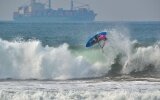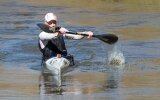- Magazine
- #readityourway
- Weekly Stories
- #shareyourstory
-
Adventure
- Abroad Travelling
- Africa Travelling
- Events
- Expos & Shows
- Festivals
- Fishing
- Free Diving
- Gliding
- Horse Riding
- Inspiring People
- Islands Travelling
- Kite/Windsurfing
- Motorbiking
- Motorised Water Sports
- Mountaineering
- Mountain Biking
- Off-road 4x4
- Off-road Motorbiking
- Paddling
- Performance Driving
- Photography
- Rock Climbing
- Rollerblading
- Sailing
- Scuba Diving
- Skateboarding
- Skydiving
- Snowboarding & Skiing
- Surfing
- Swimming
- Trail Running
- Wakeboarding
- Waveski Surfing
-
Sport
- Adventure Racing
- Fishing
- Free Diving
- Gliding
- Health & Fitness
- Horse Riding
- Inspiring People
- Kite/Windsurfing
- MMA
- Motorbiking
- Mountain Biking
- Multi-sport
- Off-road 4x4
- Off-road Motorbiking
- Paddling
- Performance Driving
- Photography
- Road Cycling
- Road Running
- Rock Climbing
- Rollerblading
- Sailing
- Scuba Diving
- Skateboarding
- Skydiving
- Snowboarding & Skiing
- Surfing
- Swimming
- Rugby
- Trail Running
- Triathlon
- Wakeboarding
- Waveski Surfing
- Lifestyle
- Calendar
Basics Executing the Sculling Brace & Space
Words: Deon Breytenbach | Photos: Ryan Peel & Kate Walton | Blog: www.doitnow.co.za/blogs/deon-breytenbach
Topic:
Paddling
By now, you should have the hang of braces and draw strokes, and made them something you can rely on to keep your hair dry. The next recovery tactic I’m going to look at is the sculling brace. This combination of strokes is essential when you end up in places you did not plan to be.

Sculling brace
The scull stroke was originally intended to move open canoes sideways, while still facing your original direction. With modern kayaks, we still use it for lateral movement, but also as a survival stroke to keep your head above water in retentive features.
First, let us look at performing it on flat water, the easiest place to get the hang of this stroke. The key to remember here is the angle of your paddle shaft. The more vertical your shaft is, the more you will move sideways, whereas if your shaft is horizontal, you’ll get more leverage from the stroke to keep your head up. This stroke is also a bit of a risky one, especially when using it to keep your head out the water because paddlers tend to over extend their arms and this puts strain on their shoulders. Therefore, you must keep your arms slightly bent at the elbow.
Remember, the starting point of the neutral draw stroke set-up is from your hips, with your non-active hand at eye level and your shaft vertical. Now you want to slice your blade forward, with the open blade facing towards your knees. As the blade reaches your knees, close the blade face a little and slice it back towards your hips. The blade should remain the same distance away from your kayak all the way through this move. When you get back to your hips, open the blade face again and slide it forward towards your knees. This should keep your kayak facing in the same direction, but moving sideways towards the side of your kayak that you are doing the stroke on. When slicing back and forth, your core muscles and torso rotation should be doing the work. If you find that your bow is changing direction and pointing in, then you are not engaging your core muscles and slicing too far forward. If your stern is coming round, then you are going too far back on the stroke. The ideal position for the sculling brace is from just behind your hips to your middle thigh. It is a smallish movement, but it must be a strong one.
The sculling stroke can also help you to pull yourself over the retentive part of stopper waves and flush out. It also comes in handy if you are being pushed against a wall, rock or bank and need to open up some space so that you can get in a proper stroke to paddle away.
I recommend you practice the vertical scull stroke first, so that you get comfy with the movements required and build up some muscle memory. Practise on both sides, folks.
When things get a bit messy and you’re stuck in a retentive pour over/waterfall, you can use the scull stroke, but you will need to get your paddle as horizontal as possible. This is when it evolves from a scull stroke to a sculling brace. To give you an example, let’s say that you are stuck in a drop with your right hand on your downstream side. You want to get your paddle as horizontal as possible, with your right-hand blade as close as possible to the surface. Now you need to sit upright, slice faster and keep your head still. You will now be upside down, so position your blade next to you, with your blade face open. A quick, hard slice forward should give you some initial resistance on your paddle, which will enable you to engage your hip muscles and move your head closer to the surface. As your stroke almost reaches your knees, close the blade face and slice back hard towards your hips. If you are thinking that this is similar to your high brace action, well done, it is.
The key to using the sculling brace to keep your head above the surface is that you must do it with total commitment and it must happen continuously. If you hesitate between sweeping forward and back, you will lose the resistance created by the bracing action to keep your head above the surface. The best way to practice this is to flop over in flat water and have a friend keep an eye on you, as well as let you know if you are locking your elbows. Remember, never lock your elbows. Using the sculling brace to keep your head above the surface in flat water is very tiring and requires a lot of practise, flexibility and commitment. But once you get the hang of it, this technique can be a lifesaver and swim stopper. In a real situation, you’ll want to be able to get your head above the surface so that you can keep an eye on the person who is going to rescue you with a throw bag. You need to keep eye contact with your rescue team whenever possible and for as long as possible to make the rescue safer and faster.
Space Godzilla
To end off on a lighter note, I’ll take a quick look at the Space Godzilla, the easiest tweak to the super cool Loop. Your set-up and initial body and paddle positions are the same as the Loop’s, except that you need to tuck forward for a Space Godzilla instead of tucking to the side. If you are going for a right-hand-blade Space Godzilla, then tuck forward as you get to the top of your pop and punch your right hand past your left knee, while looking over your left shoulder. Tucking at an angle will start the twist rotation of your move. If you tuck hard to your left and are completely inverted, you will have twisted enough so that your kayak is on its side in the air. When your right-hand blade touches the foam pile, put in a forward stroke and kick your legs out in front of you. This will level out your kayak so that you end up in the front surf. On a big enough feature, and if you have enough air, you can rotate all the way round before landing flat in the front surf.
If you use this move in a competition, you will need to get a minimum of a 90° twist to land on edge and score the move. This is also a totally wicked move to link to a few cartwheels, seeing as you are already landing on edge and have some spinning momentum. And for your efforts, you will score bonus link points for both the Space Godzilla and cartwheels.
As we are reaching the end of our summer paddling season and the days are getting a bit chillier, next month I will look at the top toys to keep you warm, as well as how to get your pivot turns going to save energy during winter.
|
|
|
|
|
|
|
|
|
|
|
|
Issue:
Issue 25 May '13
Contributor:
Deon Breytenbach
Related content
|
Aussie Morfitt Organising Hansa Fish Challenge
|
|
|
|
|
|
|
|
|








